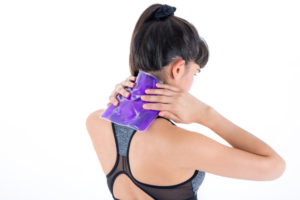What are some pain management techniques?
Pain comes in two basic forms chronic and acute. In most cases acute pain is a result of a sudden event like surgery, bone fractures, infections, cuts and lacerations, falls, and burns. Acute pain is normally treated by a physician immediately following the event that caused the pain. Usually the pain does not last very long, six months at the longest and it dissipates as the injury or condition heals. Chronic pain is long lasting and is the result of a disease or condition. Some chronic pain may be the result of trauma which caused a longer term issue. In many cases the pain starts to affect the patient in unexpected ways like a loss of appetite, depression, and a decrease in energy. When a patient begins to experience chronic pain it is time to see a pain management doctor.
Common Chronic Pain Symptoms
Some common chronic pain symptoms and complaints include:
- Spine and back pain
- Headaches
- Arthritis and osteoarthritis
- Fibromyalgia
- Damage to nerves
- Cancer and cancer treatments
- Joint damage and inflammation
- Psychological

Causes of Chronic Pain
While some chronic pain is the result of disease, injury, or other medical conditions, some are caused by less troublesome issues. Some issues that may be more easily treated through lifestyle changes include:
- An uncomfortable or bad mattress
- Bad posture
- Repetitive motion conditions
- Improper shoes
- Excessive weight
- Poor lifting techniques
- Diet & Nutrition

Non-invasive pain relief techniques that really work
Sometimes pain has a purpose — it can alert us that we’ve sprained an ankle, for example. But for many people, pain can linger for weeks or even months, causing needless suffering and interfering with quality of life.
If your pain has overstayed its welcome, you should know that you have more treatment options today than ever before. Here, we’ve listed eight techniques to control and reduce your pain that don’t require an invasive procedure — or even taking a pill.
Cold and heat.
These two tried-and-true methods are still the cornerstone of relieving pain for certain kinds of injuries. If a homemade hot or cold pack doesn’t do the trick, try asking a physical therapist or chiropractor for their versions of these treatments, which can penetrate deeper into the muscle and tissue.
Exercise.
Physical activity plays a crucial role in interrupting the “vicious cycle” of pain and reduced mobility found in some chronic conditions such as arthritis and fibromyalgia. Try gentle aerobic activities such as walking, swimming, or cycling.
Physical therapy and occupational therapy.
These two specialties can be among your staunchest allies in the fight against pain. Physical therapists guide you through a series of exercises designed to preserve or improve your strength and mobility. Occupational therapists help you learn to perform a range of daily activities in a way that doesn’t aggravate your pain.
Mind-body techniques.
These techniques, which include meditation, mindfulness, and breathing exercises (among many others), help you restore a sense of control over your body and turn down the “fight or flight” response, which can worsen chronic muscle tension and pain.
Yoga and tai chi.
These two exercise practices incorporate breath control, meditation, and gentle movements to stretch and strengthen muscles. Many studies have shown that they can help people manage pain caused by a host of conditions, from headaches to arthritis to lingering injuries.
Manual techniques
Manipulation of affected areas by applying force to the joints, muscles, and ligaments. Some evidence for the effectiveness of certain techniques is available.
Behavioral modification
Use of behavioral methods to optimize patient responses to back pain and painful stimuli. Cognitive therapy involves teaching the patient to alleviate back pain by means of relaxation techniques, coping techniques and other methods. Biofeedback involves learning to control muscle tension, blood pressure, and heart rate for symptomatic improvement.
Biofeedback.
This technique involves learning relaxation and breathing exercises with the help of a biofeedback machine, which turns data on physiological functions (such as heart rate and blood pressure) into visual cues such as a graph, a blinking light, or even an animation. Watching and modifying the visualizations gives you a degree of control over your body’s response to pain.
Music therapy.
Studies have shown that music can help relieve pain during and after surgery and childbirth. Classical music has proven to work especially well, but there’s no harm in trying your favorite genre — listening to any kind of music can distract you from pain or discomfort.